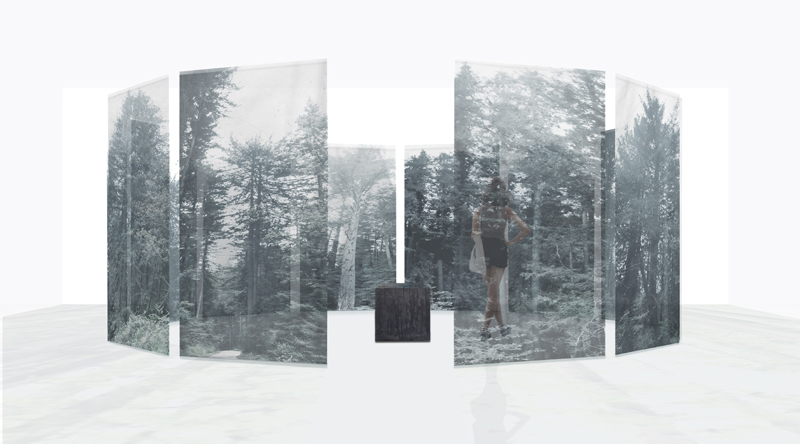
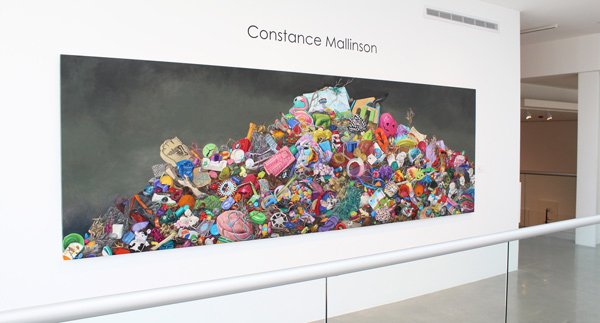
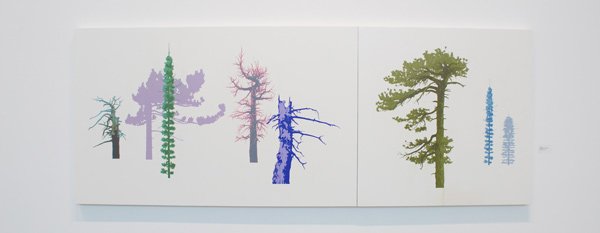
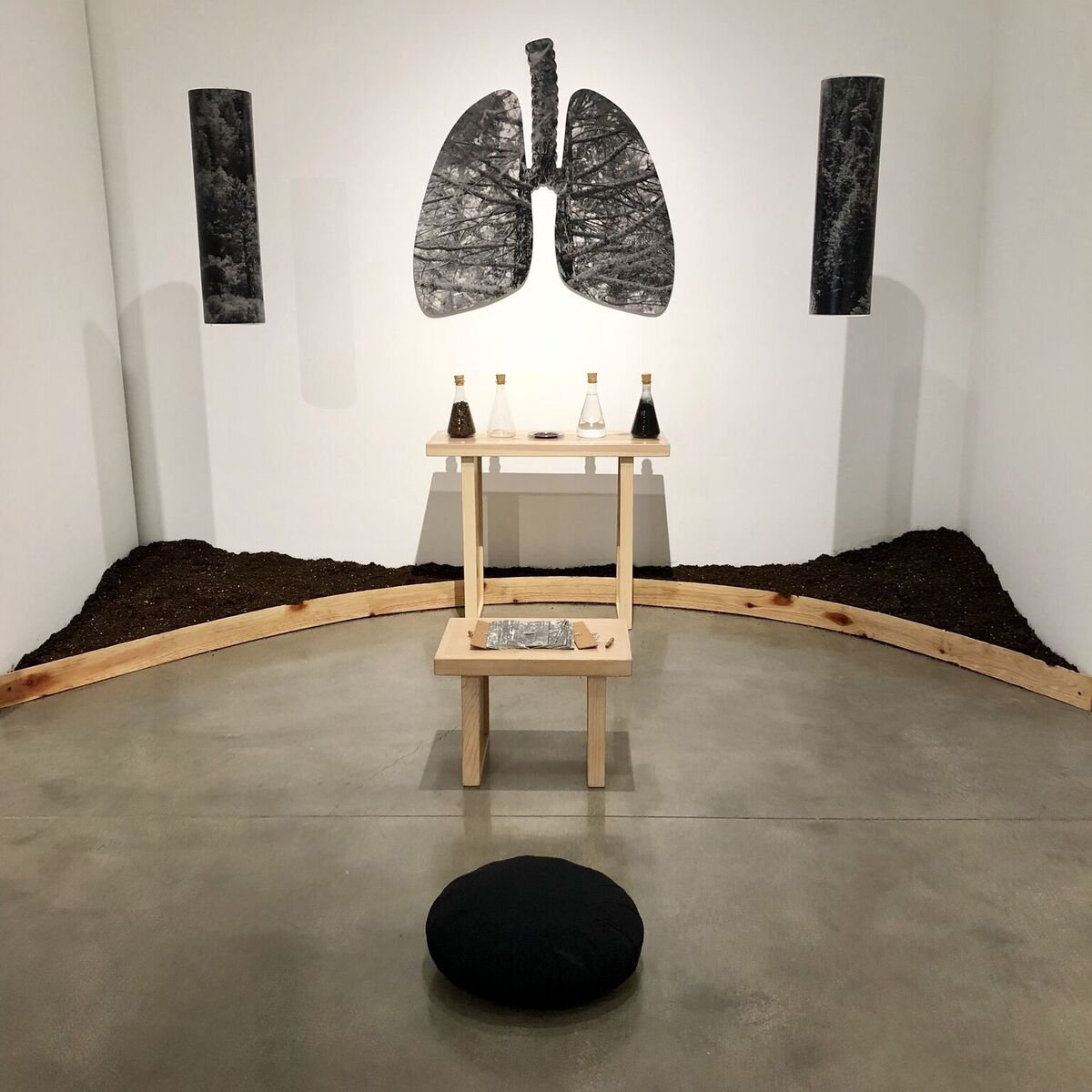
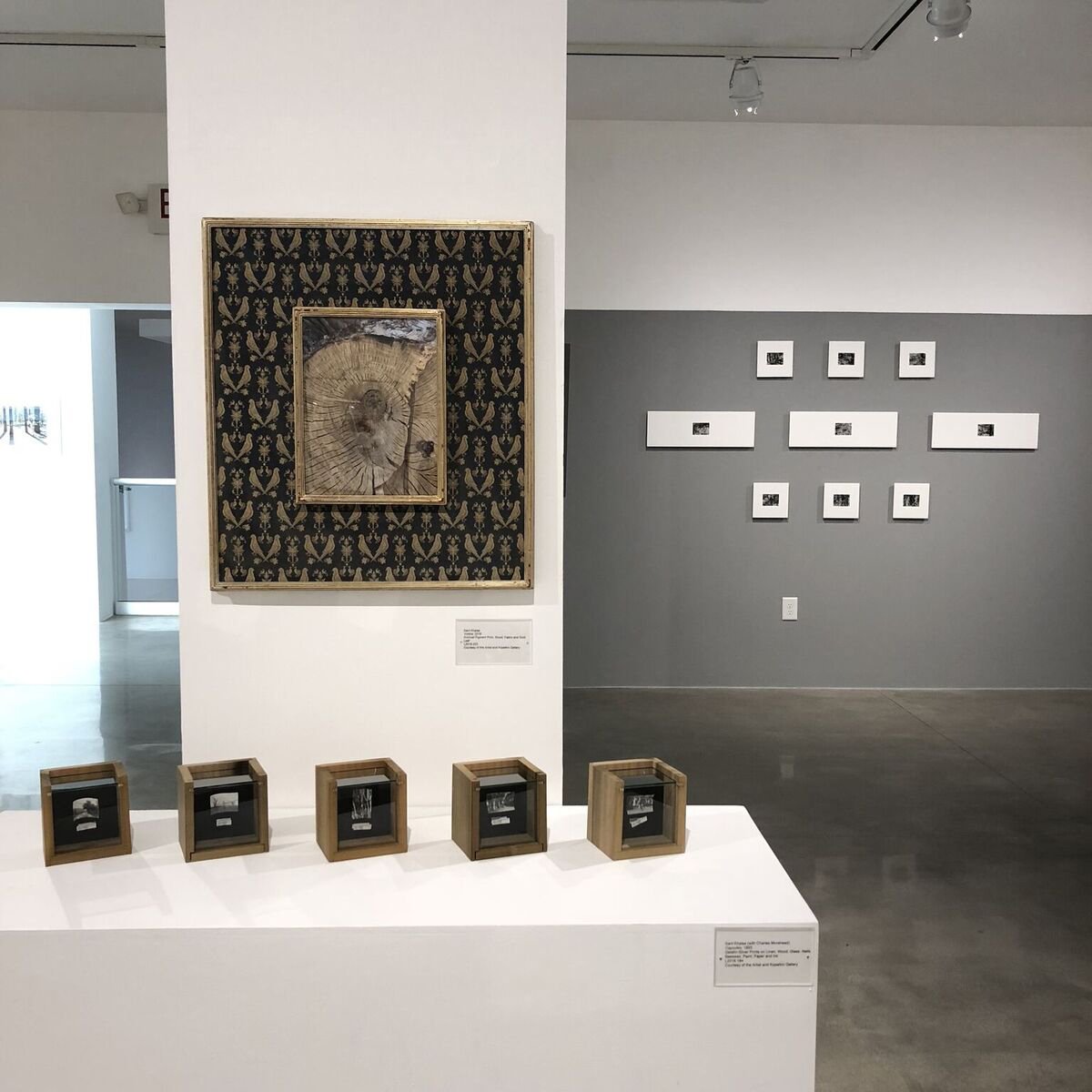

THE MUSEUM OF ART AND HISTORY (MOAH), LANCASTER, CALIFORNIA
THE FOREST FOR THE TREES
(Group Exhibition)
JUNE 23, 2018 - SEPTEMBER 2, 2018
PHOTO CREDIT: THE MUSEUM OF ART AND HISTORY
Miya Ando’s The Cathedral (The Shrine of Trees, The Sisters and The Mother) was an immersive installation exhibited at the Museum of Art and History (MOAH): Cedar in Lancaster, California, from June 23 to September 2, 2018. The work was inspired by a natural formation found in old-growth redwood forests, where a circle of trees grows around the stump or roots of a central “mother” tree—often referred to as a “cathedral.” Ando encountered these structures during her childhood in the Santa Cruz Mountains and translated their ecological and symbolic resonance into architectural space.
In the gallery, Ando recreated this phenomenon using sheer silk chiffon panels suspended from the ceiling in a circular formation. The installation invited visitors to physically enter the space, evoking the hush of a grove and offering a site for reflection and embodied stillness. The delicate movement of the textile panels responded to subtle air currents, suggesting the animate life of the forest.
The concept of the redwood cathedral is rooted in biological interdependence: redwoods (Sequoia sempervirens) reproduce clonally through basal sprouting, and when a central tree dies, genetically identical offspring often grow in a ring around it. These surrounding trees can continue to support the decaying root system of the mother tree, creating a literal and symbolic expression of continuity, support, and memory. Similar patterns of clonal or interconnected growth can be found in other species such as aspen, beech, black locust, and banyan trees.
The Cathedral positions Ando’s work within the Western canon of site-specific and minimalist installation art, recalling the spiritual ambitions of artists such as James Turrell, Agnes Martin, and Richard Long. Yet Ando diverges from the monumentality or conceptual austerity typical of these figures by incorporating an ecological poetics grounded in living systems and quiet impermanence. Rather than impose form upon space, she reveals an invisible architecture already present in the natural world—an architecture of kinship, decay, and renewal.
In doing so, The Cathedral bridges environmental phenomena and contemplative aesthetics, expanding the boundaries of Western minimalism to include a broader, more cyclical understanding of space, time, and presence.